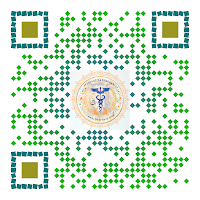Distinctive
dark red rash appears on the hands, feet, calves, neck, and face, and the
tongue and mouth turn dark red.
Many
people with niacin deficiency also have deficiencies of protein, riboflavin (a
B vitamin), and vitamin B6.
Pellagra
develops only if diet is deficient in niacin & tryptophan (body can convert
tryptophan to niacin).
Affects
the skin, digestive tract, & brain.
Also
develops in:
Hartnup
disease (absorption of tryptophan is impaired), & Carcinoid syndrome (tryptophan
is not converted to niacin).
Alcoholism
& isoniazid can lead to a deficiency of niacin.
The
diagnosis of niacin deficiency is based on the diet history and symptoms.
Measuring a by-product of niacin in urine can help establish the diagnosis, but
this test is not always available. The diagnosis is confirmed if niacin
relieves symptoms.
Treatment:
Nicotinamide, unlike nicotinic acid, does not cause flushing, itching, burning,
or tingling sensations.






.png)

.png)
.png)
.png)
.png)
.png)
.png)
.png)
.png)

.png)

.jpg)














